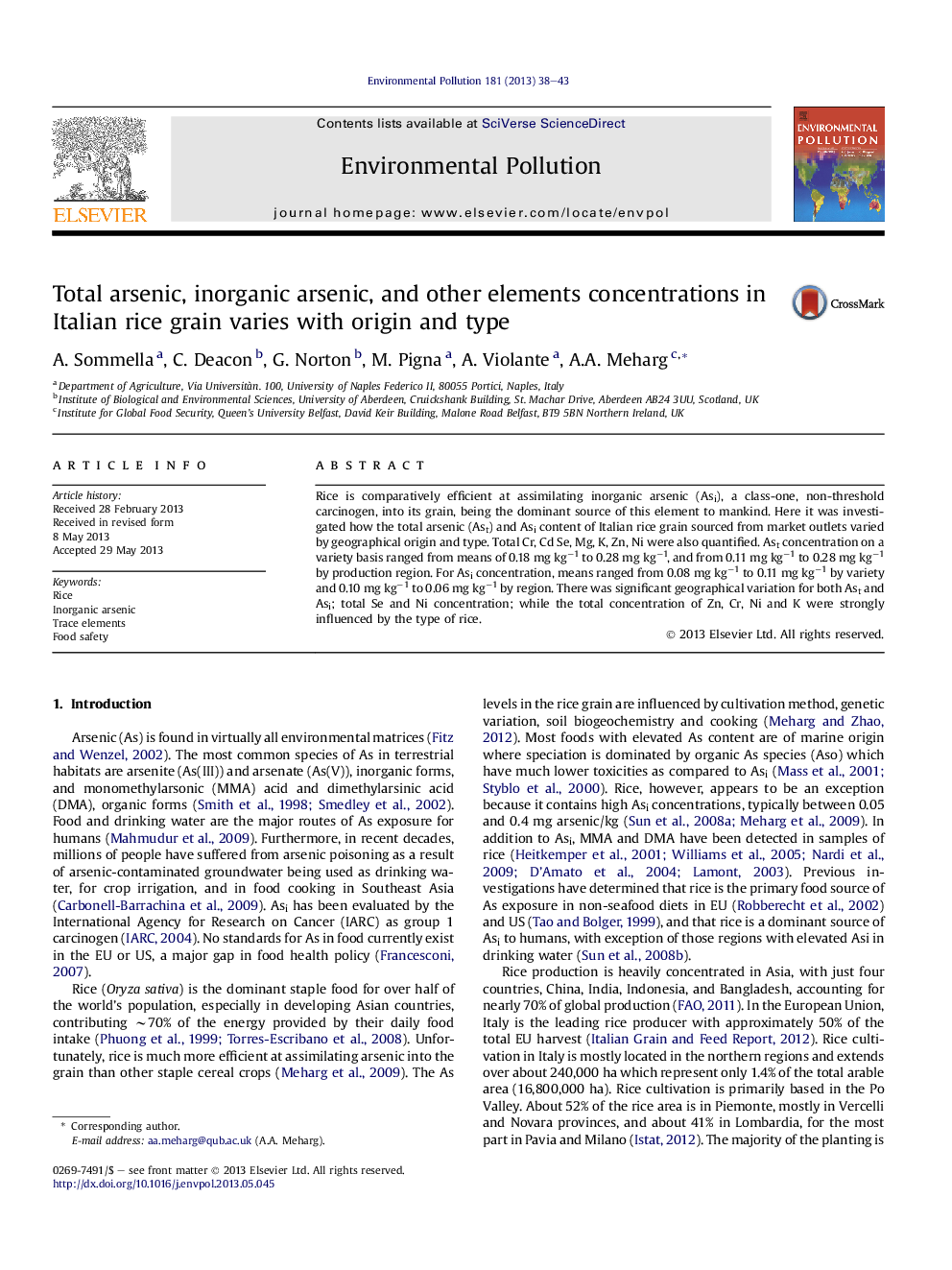| Article ID | Journal | Published Year | Pages | File Type |
|---|---|---|---|---|
| 6317282 | Environmental Pollution | 2013 | 6 Pages |
Abstract
Rice is comparatively efficient at assimilating inorganic arsenic (Asi), a class-one, non-threshold carcinogen, into its grain, being the dominant source of this element to mankind. Here it was investigated how the total arsenic (Ast) and Asi content of Italian rice grain sourced from market outlets varied by geographical origin and type. Total Cr, Cd Se, Mg, K, Zn, Ni were also quantified. Ast concentration on a variety basis ranged from means of 0.18 mg kgâ1 to 0.28 mg kgâ1, and from 0.11 mg kgâ1 to 0.28 mg kgâ1 by production region. For Asi concentration, means ranged from 0.08 mg kgâ1 to 0.11 mg kgâ1 by variety and 0.10 mg kgâ1 to 0.06 mg kgâ1 by region. There was significant geographical variation for both Ast and Asi; total Se and Ni concentration; while the total concentration of Zn, Cr, Ni and K were strongly influenced by the type of rice.
Related Topics
Life Sciences
Environmental Science
Environmental Chemistry
Authors
A. Sommella, C. Deacon, G. Norton, M. Pigna, A. Violante, A.A. Meharg,
